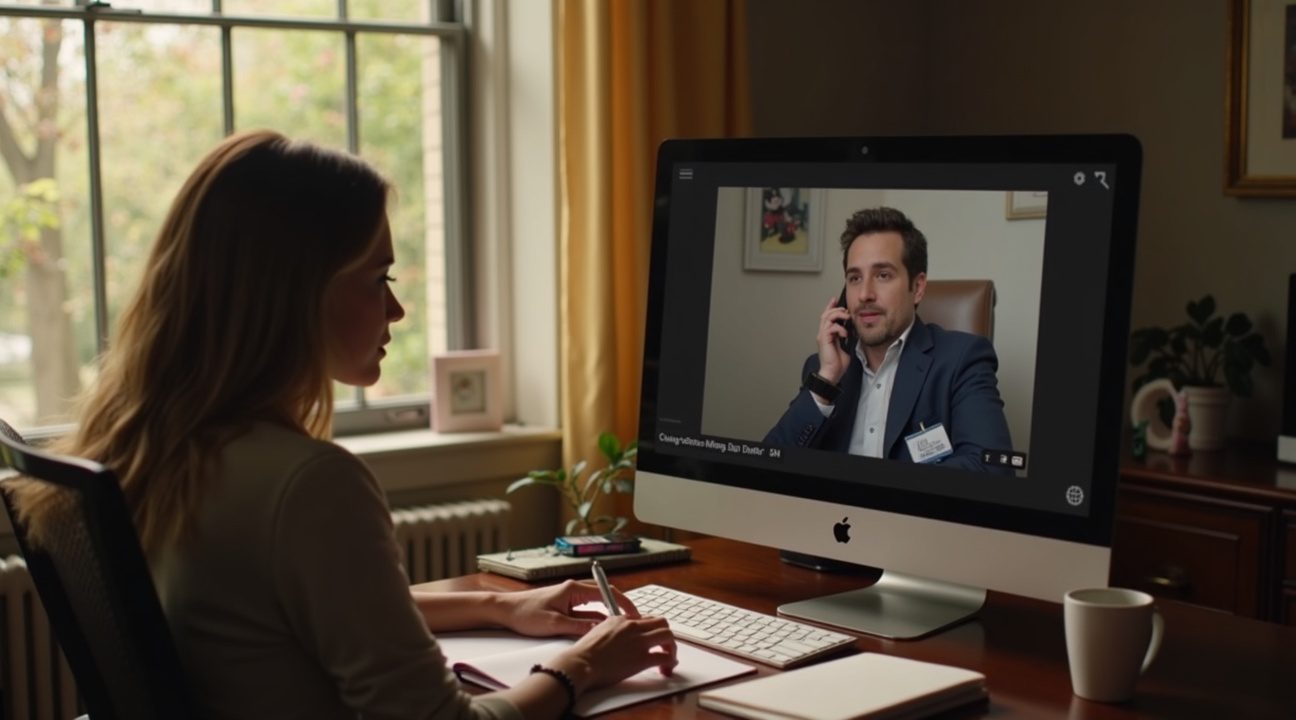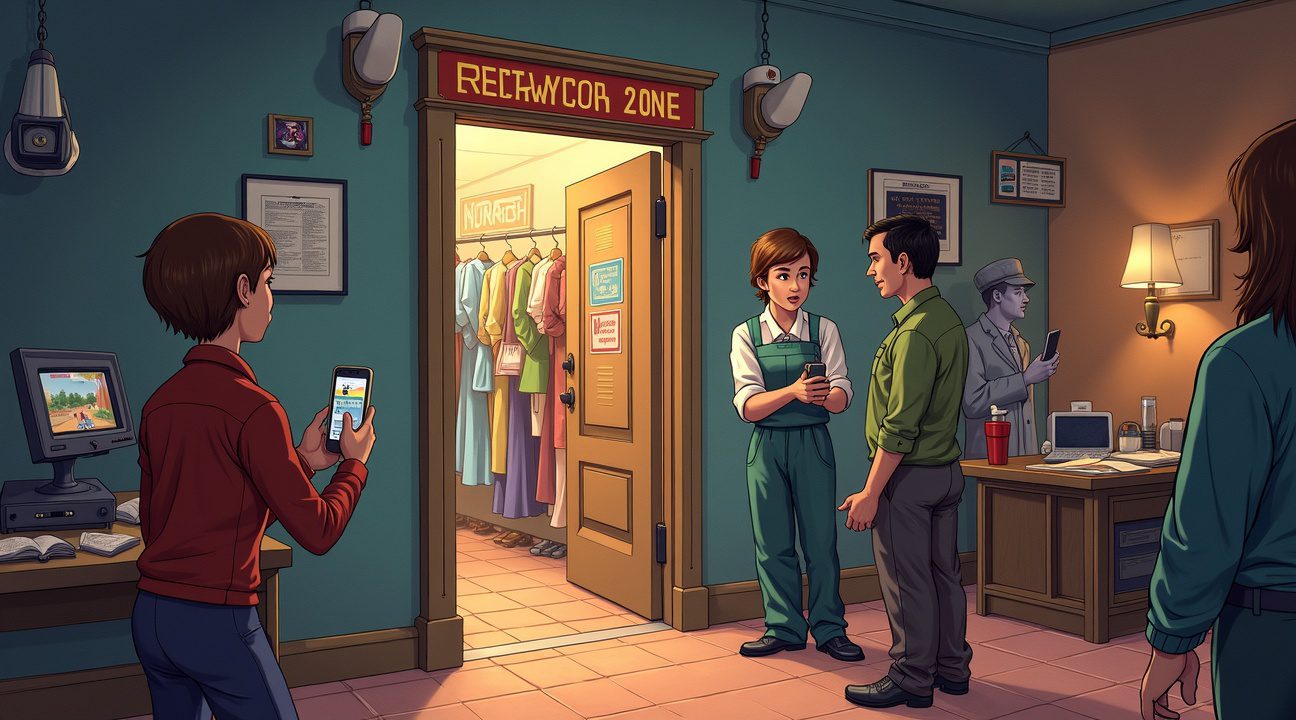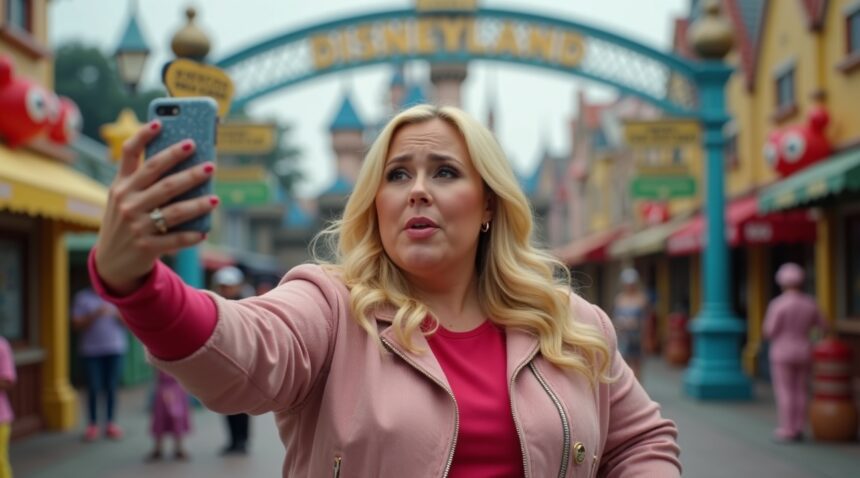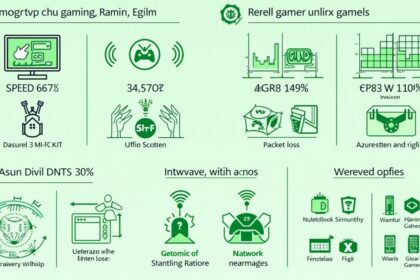Rebel Wilson received a 30-day ban from Disneyland after taking a selfie in a restricted area known as a “secret bathroom,” violating the park’s strict no-photography rules in off-limits zones.
Key Takeaways
- Wilson was banned for 30 days from Disneyland after taking a selfie in a restricted “secret bathroom” area, which broke rules regarding photography in cast-only zones.
- Disney staff contacted Wilson directly and uniquely allowed her to choose when her ban would begin, accommodating her filming schedule by granting a delay until June.
- The incident received widespread attention across media and social platforms, igniting debates about possible preferential treatment for celebrity guests over regular visitors.
- Wilson was a routine Disneyland visitor, enjoying frequent weekend getaways and holidays at the park, making the ban significantly disruptive to her leisurely habits.
- Disney enforces strict no-photography policies in backstage areas, security zones, maintenance tunnels, and cast member lounges to preserve operational secrecy and the privacy of all guests and employees.
Public and Media Reaction
News of the incident quickly spread via traditional outlets and social media, leading to discussions over whether Rebel Wilson received special treatment due to her celebrity status. Many argued that a regular guest might have faced a more immediate or harsher penalty for the same violation.
Disney, often strict about enforcing rules within their parks, rarely allows leeway for guests who breach backstage access or photographic policies. However, the brand has also been known to manage public relations with celebrities carefully to avoid negative press.
More About Disney’s Restricted Areas
Disney parks operate with clearly designated spaces off-limits to the general public. These include areas designed for:
- Cast member operations and rest areas
- Maintenance and engineering functions
- Security personnel and surveillance systems
- Scenic transitions that support Disney’s theming integrity
Unauthorized access or photography in these areas is considered a serious violation. Disney’s concern lies not only in preserving the magic for guests but also in ensuring the safety and privacy of employees working on-site.
For additional insight into this story, the original coverage is available through The New York Times article on Rebel Wilson’s Disneyland ban.
Rebel Wilson Received a 30-Day Ban for Taking a Selfie in a ‘Secret Bathroom’
The actress found herself temporarily banned from the happiest place on earth after breaking one of Disneyland’s strict photography policies. Wilson received a 30-day exclusion from the park for taking a selfie in what she described as a “secret bathroom” — a restricted area not accessible to regular guests.
The Incident That Led to Her Ban
Disneyland maintains stringent rules about photography in certain areas of the park, particularly in staff-only zones and private locations. Wilson’s decision to capture a photo in this restricted bathroom violated these established policies, resulting in her temporary removal from the premises. The specific location remains undisclosed, though Wilson characterized it as a hidden area that most visitors wouldn’t know about or have access to.
Theme parks like Disney have faced various challenges with guest behavior and policy enforcement over the years. Disney’s strict policies extend beyond just their streaming services to their physical locations, where security and privacy concerns drive many operational decisions.
Wilson’s Public Confirmation
In March 2023, Wilson openly discussed the incident during her appearance on ‘The Daily Show’ and other interviews. She confirmed the 30-day ban but chose not to reveal the exact date the incident occurred or provide specific details about the bathroom’s location within the park. Her candid approach to discussing the situation showed she took responsibility for the policy violation while maintaining some privacy about the specifics.
The actress treated the experience with humor during her interviews, acknowledging that she understood why the park had to enforce their rules. Disney’s photography restrictions exist to protect both guest privacy and operational security, especially in areas designated for staff use or containing sensitive park infrastructure.
Wilson’s ban represents how seriously Disney takes policy violations, even from high-profile guests. The company applies their rules consistently across all visitors, regardless of celebrity status. This incident demonstrates that restricted areas within Disney parks serve specific purposes and that photographing in these spaces can result in immediate consequences, including temporary exclusion from the property.

Disney Staff Allowed Wilson to Choose When Her Ban Would Take Effect
Wilson revealed that Disney staff contacted her directly to discuss the timing of her ban, demonstrating an unusual level of administrative flexibility. The actress stated that Disney representatives allowed her to choose when the 30-day ban would begin, taking her filming schedule into consideration. She requested that the ban take effect in June, and Disney accommodated this request.
This level of accommodation shows how Disney handles enforcement with high-profile individuals who violate park policies. While the company maintains strict rules for all guests, Wilson’s experience illustrates that enforcement can include practical considerations for scheduling conflicts. The flexibility Disney showed contrasts sharply with typical ban procedures, where most guests face immediate enforcement without scheduling options.
Temporary Ban Reflects Standard Policy for Minor Violations
Disney’s decision to impose a 30-day temporary ban rather than a permanent one aligns with how the company typically handles lesser policy violations. When guests break rules without posing significant threats or causing major disruptions, Disney often applies measured responses that allow for eventual return to the parks. Wilson’s situation fits this pattern, as her actions didn’t involve safety concerns or threatening behavior.
The entertainment industry has seen various incidents where celebrities face consequences for their actions at Disney properties. Recent Disney controversies have shown how the company handles different types of policy violations and public relations challenges. Wilson’s case demonstrates that even well-known figures must follow the same rules as regular guests, though enforcement timing may accommodate professional obligations.
Disney’s approach to Wilson’s ban reflects several key factors that influence how the company handles policy violations:
- The nature and severity of the rule violation
- Whether the guest poses ongoing safety or security risks
- The guest’s cooperation with Disney staff during the incident
- Public relations considerations for high-profile individuals
- Practical scheduling factors for celebrities with professional commitments
Wilson’s ability to schedule her ban timing suggests that Disney recognized her violation as minor and non-threatening. The accommodation also indicates that she maintained a cooperative relationship with Disney staff throughout the enforcement process. This flexibility wouldn’t likely extend to guests who pose security risks or refuse to cooperate with park policies.
The temporary nature of Wilson’s ban reinforces Disney’s graduated approach to policy enforcement. Rather than implementing permanent bans for first-time minor violations, the company often applies measured consequences that serve as warnings while maintaining the possibility for future visits. This approach allows Disney to uphold its standards while avoiding overly harsh penalties for relatively minor infractions.
Wilson’s experience highlights how celebrity status can influence the administrative aspects of policy enforcement without changing the fundamental consequences. While she faced the same 30-day ban that any guest might receive for similar violations, the scheduling flexibility demonstrates Disney’s practical approach to managing high-profile situations. Disney’s recent challenges with public perception make careful handling of celebrity incidents increasingly important for the company’s reputation.
The fact that Disney staff reached out to Wilson directly, rather than simply implementing the ban immediately, shows the company’s willingness to work with individuals who accept responsibility for their actions. This collaborative approach to enforcement timing likely helped maintain a positive relationship between Wilson and Disney, despite the policy violation that triggered the ban.

Disneyland’s Code of Conduct Prohibits Photography in Restricted Areas
Disneyland maintains strict photography policies designed to protect both guest privacy and operational security throughout the park. These comprehensive guidelines specifically prohibit unauthorized photography in designated restricted areas, ensuring that sensitive locations remain secure from public exposure. I’ve observed how these policies serve multiple purposes, from safeguarding cast member work areas to protecting proprietary operational procedures that Disney considers trade secrets.
The entertainment giant enforces these rules consistently across all visitors, regardless of their celebrity status or public profile. Wilson’s incident demonstrates that Disney’s enforcement applies universally, sending a clear message that compliance expectations remain the same for everyone who enters the park. Cast members receive training to identify restricted zones and respond appropriately when guests attempt unauthorized photography in these areas.
Areas Where Photography Restrictions Apply
Several specific locations within Disneyland fall under these photography restrictions due to various operational and security concerns:
- Backstage areas where cast members prepare for performances and store costumes
- Maintenance facilities that house technical equipment and safety systems
- Security checkpoints and monitoring stations throughout the property
- Cast member break rooms and administrative offices
- Restricted access corridors used for emergency evacuations
- Technical control rooms for attractions and entertainment systems
Disney’s approach to policy enforcement reflects their commitment to maintaining operational integrity while preserving the magical experience for all guests. The company invests significant resources in training security personnel to identify potential violations quickly and address them diplomatically. I understand that these measures help protect not only Disney’s intellectual property but also ensure that guests can enjoy their visit without unwanted intrusion into private moments.
The Wilson case highlights how even well-intentioned actions can conflict with established park policies. Many celebrities visit Disney properties regularly without incident because they respect these boundaries and work with Disney’s guest relations team when special accommodations are needed. The company typically offers alternative solutions for high-profile guests who want to document their visit while staying within policy guidelines.
Park security utilizes both visible and discrete monitoring systems to identify photography violations in restricted areas. When violations occur, security personnel typically approach guests with a polite but firm reminder about park policies. Most situations resolve quickly through education rather than enforcement action, though Disney’s strict policies can lead to more serious consequences when guests refuse to comply.
These photography restrictions also protect other guests’ privacy rights during their Disney experience. Families often visit the parks to create special memories, and unauthorized photography in certain areas could compromise their ability to enjoy these moments without unwanted exposure. Disney recognizes this responsibility and structures their policies accordingly.
The consistency of policy enforcement serves an important business function for Disney as well. By maintaining the same standards for all guests, the company avoids potential discrimination claims while ensuring that their operational security remains intact. This approach has helped Disney maintain its reputation as a family-friendly destination where guests can feel secure and protected during their visit.

Media Coverage Highlighted the Unusual Circumstances of a Celebrity Choosing Their Ban Timing
The media frenzy surrounding Rebel Wilson’s Disneyland ban captured widespread attention due to its bizarre circumstances. Major news outlets, including the Los Angeles Times and Fox LA, extensively covered Wilson’s account of being allowed to choose her own ban start date. This unprecedented arrangement struck journalists and audiences as particularly odd, given Disney’s typically strict enforcement policies.
News Outlets Amplified the Story’s Peculiar Details
Traditional media sources treated Wilson’s story as both entertainment news and a glimpse into celebrity privilege at theme parks. The Los Angeles Times and Fox LA reported on the actress’s version of events, though Disneyland maintained its standard practice of not publicly confirming or denying specific incidents involving guests. Coverage emphasized the unusual nature of a celebrity apparently negotiating the timing of their own punishment.
Social media platforms exploded with commentary about the incident. Users debated whether Wilson’s account was credible and questioned what kind of behavior might warrant such treatment from Disney security. The story gained additional traction as people shared their own experiences with Disney’s policies and enforcement procedures.
Public Debate Exposed Questions About Disney’s Celebrity Treatment
The incident sparked broader discussions about how Disney handles celebrity guests differently from regular visitors. Online forums buzzed with speculation about whether celebrities receive special treatment when they violate park rules. Many questioned the fairness of allowing someone to schedule their own consequences.
Discussions also centered on Wilson’s mention of accessing restricted areas within Disneyland. Social media users and news commentators debated the existence and accessibility of private spaces that regular guests can’t visit. This aspect of the story particularly intrigued Disney fans who wondered about behind-the-scenes areas and VIP access protocols.
The coverage revealed public fascination with celebrity treatment at major entertainment venues. People expressed mixed reactions — some found the story amusing while others criticized what they perceived as preferential treatment. The incident highlighted ongoing tensions between celebrity privilege and equal treatment policies at popular destinations.
Disney’s refusal to comment publicly on the specifics only fueled more speculation. The company’s silence left Wilson’s account as the primary source of information, creating an information vacuum that media outlets and social media users eagerly filled with their own interpretations and theories about what really happened during her visit.
Wilson Was a Regular Disneyland Visitor Before the Incident
Before the controversial photo incident that led to her temporary suspension, Rebel Wilson had established herself as a devoted Disneyland enthusiast. The actress frequently visited the Anaheim theme park, making it a regular part of her weekend routine and holiday celebrations. Wilson’s connection to Disney ran deeper than casual visits — the park held genuine personal significance in her life.
A Personal Connection to the Magic Kingdom
Wilson has been open about her relationship with Disneyland, describing her visits as meaningful rather than obsessive. She made clear distinctions about her level of fandom, stating that while she wasn’t completely consumed by Disney culture, the park served as an important escape and source of joy in her personal life. This connection made the 30-day ban particularly challenging for the actress, as it disrupted what had become a cherished routine.
The timing of the incident couldn’t have been more public for Wilson. During the period leading up to her ban, she was experiencing heightened media attention after introducing her girlfriend Ramona Agruma during Pride Month. This increased visibility meant that any controversy involving the actress would receive amplified coverage, turning what might have been a minor incident into a widely discussed story.
The Impact on Her Disney Experience
Wilson’s regular attendance patterns at Disneyland demonstrated her genuine appreciation for the park experience. Her weekend visits and holiday traditions showed that Disney had become woven into her personal life in meaningful ways. The actress had developed her own relationship with the park that went beyond celebrity appearances or promotional events.
The ban disrupted more than just Wilson’s entertainment plans — it affected personal traditions and routines that had become important to her well-being. This disruption highlights how even temporary restrictions can significantly impact individuals who have made Disney parks a regular part of their lives. Disney’s enforcement policies affect not just casual visitors but also those who have developed deep personal connections to the parks.
Wilson’s situation demonstrates how quickly a regular guest’s relationship with Disney can change. Her experience serves as a reminder that even frequent visitors must navigate park policies carefully, regardless of their celebrity status or personal attachment to the Disney brand.
The Ban Sparked Broader Discussion About Disney’s Treatment of Famous Guests
Wilson’s photography incident ignited widespread conversations across social media platforms about Disney’s approach to celebrity rule enforcement. The story quickly gained traction as fans and critics alike debated whether the entertainment giant treats famous guests differently than regular visitors.
Social Media Reactions Revealed Deep Divisions
The incident exposed contrasting viewpoints about celebrity privilege at Disney parks. Many social media users expressed support for Disney’s decision, arguing that rules should apply equally regardless of fame or status. Others criticized the company for what they perceived as inconsistent enforcement, pointing out that celebrities often receive special accommodations at theme parks.
Comments flooded platforms like Twitter and Instagram, with some users sharing their own experiences of strict photo enforcement during their visits. Several guests reported being stopped by cast members for taking pictures in restricted areas, while others noted they’d witnessed celebrities receiving guided tours and access to areas typically off-limits to regular visitors.
Wilson’s experience brought unexpected attention to Disneyland’s lesser-known spaces that exist beyond public view. These areas, which include employee break rooms, administrative offices, and backstage zones, normally remain hidden from guests. The actress’s photos inadvertently revealed glimpses of these restricted spaces, sparking curiosity among Disney enthusiasts about what lies behind the magical facade.
The revelation of these secret areas generated significant interest among Disney fans who’d never considered the extensive infrastructure required to operate the park. Discussion threads emerged on various forums where users speculated about other hidden spaces and shared theories about Disney’s behind-the-scenes operations.
Wilson’s situation highlighted a complex issue regarding enforcement consistency at Disney properties. While the company maintains strict photography policies that officially apply to all guests, the timing and flexibility of enforcement can create perceptions of preferential treatment. Disney’s business decisions often generate scrutiny, and this incident added another layer to ongoing discussions about the company’s public image.
The incident raised questions about whether celebrities should expect the same treatment as regular guests or if their status warrants different consideration. Some argued that famous visitors bring positive publicity to Disney properties and should receive more lenient treatment, while others insisted that rules exist for important safety and security reasons that transcend celebrity status.
The broader discussion extended beyond just photography policies to encompass Disney’s overall relationship with celebrity culture. Observers noted that the company frequently collaborates with famous personalities for promotional events and special appearances, making Wilson’s ban seem particularly noteworthy. Disney’s entertainment projects regularly feature celebrity partnerships, which adds complexity to how the company handles rule violations by famous guests.
Industry experts weighed in on the conversation, suggesting that Disney’s response reflected their commitment to maintaining operational security and guest safety standards. They emphasized that certain areas remain restricted for legitimate reasons, including protecting proprietary operations and ensuring guest safety protocols.
The incident also prompted discussions about social media’s role in modern celebrity culture and how sharing behind-the-scenes content can sometimes conflict with established business policies. Wilson’s situation demonstrated how quickly a seemingly innocent social media post can escalate into a significant public relations situation for major entertainment companies.
Some commentators suggested that Disney’s recent controversies may have influenced their strict response to Wilson’s violation. The company has faced various challenges regarding public perception, making them potentially more sensitive to situations that could be perceived as showing favoritism to celebrities.
The discussion ultimately revealed the delicate balance Disney must maintain between accommodating high-profile guests and upholding consistent standards for all visitors. Wilson’s experience became a catalyst for examining these broader issues surrounding celebrity treatment at major entertainment venues and the challenges companies face in managing public expectations about fairness and consistency in rule enforcement.
Sources:
Los Angeles Times, “Rebel Wilson says selfie got her ‘banned from Disneyland'”
iHeart, “Rebel Wilson Reveals Why She Was ‘Banned From Disneyland For 30 Days'”
TipHero, “Rebel Wilson Reveals Why She Was Banned From Disneyland”
Fox LA, “Disneyland banned Rebel Wilson over ‘secret bathroom’ selfie”
YouTube (podcast/reported clip): “Why Rebel Wilson Was Banned From Disneyland”


